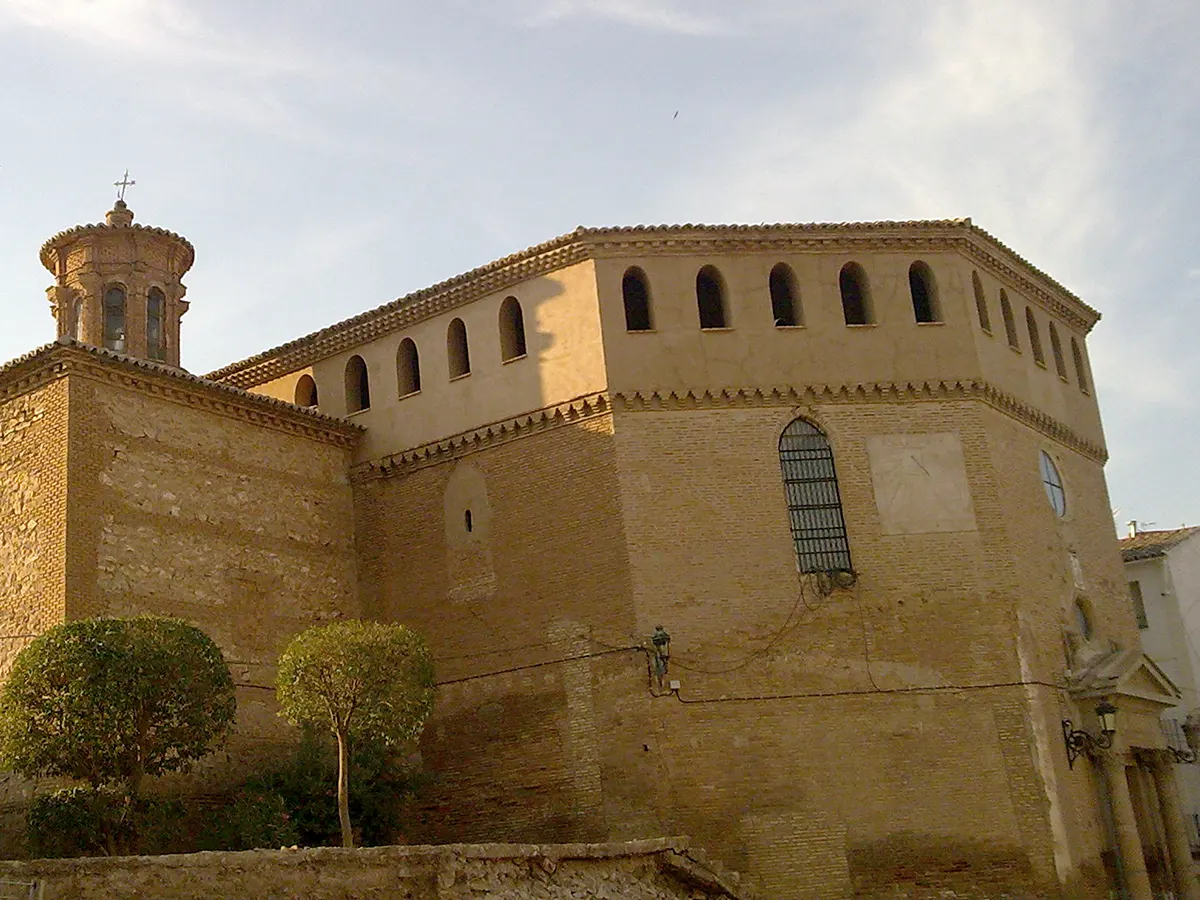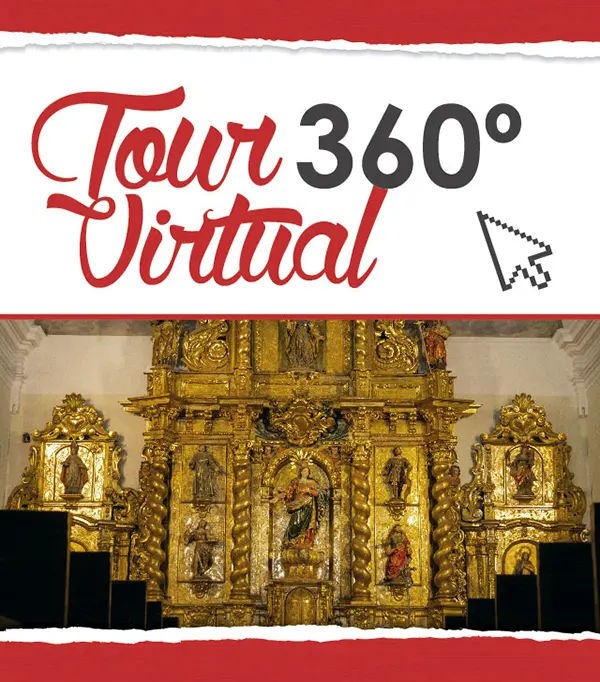Information
The “Nuestra Señora de la Asunción“ Church, located in Ricla, was dedicated to ”Nuestra Señora de Mediavilla” some years ago. It is in the village center. It is a temple from the end of the 14th century, it is known that the municipal representatives from the village had started the procedures to built a new church at the end of the 14th century. In fact, at the end of November 1390 they got the permission to use the benfits they would obtain from the parochial visitors during the next 20 years.
The Mudejar temple was built in 3 stages: at the beginnig of the 15th century an apse and the first part of the nave were built. During the 16th century it was expanded with another big part of the nave and two chaptels, the Mudejar tower was also built. In the 18th century it was expamded with “Magdalena” Chaptel in 1720, the inside was also decorated. Finally, in 1773, the current neoclassic arcade opes. It has got two classicist coloums in the sideways. They end with corinthian capital son which there used to be a friese containing the date “1773”. It endas up with a Triangula Focale.
The outside of the church is made of cricks, only the “Magdalena” Chapel comes out. The temple was built in 2 stages, as it can be seen when we observe the lateral facade, where there is a delimitation between them.
The inside contains important alterpieces.The main alterpiece was made between 1688 and 1692 by Francisco de Asta. The Wood polycromatic statue of the Virgin and of Saint Francisco de Asís, Saint Juan Bautista, Saint Isidro and Saint Bartolomé are from the 17th century. They were biult in Manuel Ramírez studio. One of the most important alterpieces is “La Virgen del Rosario” at the end of the 16th century. It was built in the studio of an important sculptor, Damian Porment. “San Miguel”, “Santa Ana” and “La virgen y el niño” and “El Santo Cristo” are other altarpieces from the 18th century.
Other main belongings include “La Virgen de Media Villa”, which is a gold sculpture from the end of the 15th century. Apart form that, there is also an organ of the second half of the 18th century, which is decorated with a Rococo style.
The church was declared a National monumento on the 3rd June 1931, and a property of cultural interest on the 30th November 2001.

En el siglo XVIII, se amplió con
la Capilla de la Magdalena,
hacia 1720 se decoró el interior.
La construcción del templo mudéjar
se realizó en tres etapas: a principios
del siglo XV se levantó el ábside
y el primer tramo de la nave;
ya entrado el siglo XVI se amplió
con un segundo tramo de grandes
proporciones y dos capillas,
y se edificó la torre mudéjar.
En el año de 1773 se abre el actual
pórtico de entrada de estilo
neoclasicista, con dos columnas
clasicistas en los laterales,
terminadas en capiteles corintios
sobre los que apea un friso que se
remata con un frontón triangular.

El retablo mayor fue realizado entre 1688 y 1692,
por Francisco de Asta. La talla de madera
policromada de la Virgen
y las esculturas en madera
policromada de San Francisco
de Asís, San Juan Bautista,
San Isidro y San Bartolomé,
de este retablo, son del siglo XVII
y al parecer se realizaron en el
taller zaragozano de Manuel Ramírez.







